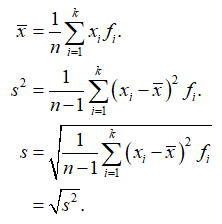What was the age distribution of prehistoric Native Americans? Extensive anthropological studies in the southwestern United States gave the following information about a prehistoric extended family group of 89 members on what is now a Native American reservation. For this community, estimate the mean age expressed in years, the sample variance, and the sample standard deviation. For the class 31 and over, use 35.5 as the class midpoint. (Round your answers to one decimal place.) Age range (years) 1-10 11-20 21-30 31 and over Number of individuals 38 21 16 14 x = s2 = s =
Inverse Normal Distribution
The method used for finding the corresponding z-critical value in a normal distribution using the known probability is said to be an inverse normal distribution. The inverse normal distribution is a continuous probability distribution with a family of two parameters.
Mean, Median, Mode
It is a descriptive summary of a data set. It can be defined by using some of the measures. The central tendencies do not provide information regarding individual data from the dataset. However, they give a summary of the data set. The central tendency or measure of central tendency is a central or typical value for a probability distribution.
Z-Scores
A z-score is a unit of measurement used in statistics to describe the position of a raw score in terms of its distance from the mean, measured with reference to standard deviation from the mean. Z-scores are useful in statistics because they allow comparison between two scores that belong to different normal distributions.
What was the age distribution of prehistoric Native Americans? Extensive anthropological studies in the southwestern United States gave the following information about a prehistoric extended family group of 89 members on what is now a Native American reservation. For this community, estimate the
| Age |
1-10 | 11-20 | 21-30 | 31 and over |
| Number of individuals | 38 | 21 | 16 | 14 |
| x | = | |
| s2 | = | |
| s | = |
Introduction:
For a grouped data with k classes having class marks xi, class frequency fi (i = 1, 2, …, k), total frequency n = Σ fi, the following are the formulae for the mean, variance, and standard deviation of a grouped data:

Trending now
This is a popular solution!
Step by step
Solved in 2 steps with 3 images









